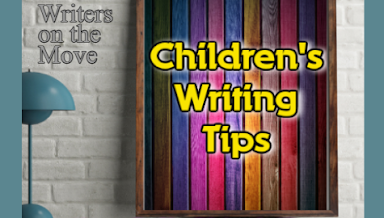Contributed by Karen Cioffi, Children's Writer
If you're a storyteller, you face a constant balancing act: how to convey essential background information without disrupting the flow of the narrative.
Flashbacks and information dumps are two commonly used writing techniques, each with its own set of benefits and pitfalls. And knowing when to use each is essential for maintaining reader engagement and story coherence.
But how do you tell the difference between them?
FLASHBACKS
When incorporated ‘the right way,’ flashbacks can provide valuable insights into a character's past experiences, motivations, and emotions. They allow readers to delve deeper into the story, bringing a broader understanding of the characters and plot.
However, mishandled flashbacks can disrupt the story's rhythm, pulling readers out of the present action and causing confusion.
INFORMATION DUMP
Compared to flashbacks, information dump entails the straightforward delivery of background information, often through exposition or dialogue.
While these dumps can effectively convey necessary details, they run the risk of overwhelming readers with an excessive amount of information all at once. This can lead to boredom or detachment from the story, as readers may feel immersed in facts rather than the narrative.
Another risk of this writing technique is that the information being presented can feel forced, as if it’s there just to inform the reader of something the author doesn’t think the reader will get otherwise.
Don’t underestimate your reader.
TWO STRATEGIES TO USE TO DETERMINE WHICH IS WHICH
So, how can authors determine whether a particular narrative element is a flashback or an information dump, and how can they integrate these techniques seamlessly into their storytelling?
1. First and foremost, it's essential to consider the purpose of the narrative element in question.
Is it primarily serving to convey a character's backstory and emotional journey, or is it purely for an explanation aimed at providing essential plot details?
If it’s to enhance the emotional journey, it's likely a flashback. If it’s to provide an explanation, it may be an information dump.
2. Next, it’s wise to pay attention to the timing and pacing of the narrative.
Flashbacks are most effective when strategically woven into the story at moments that enhance tension, deepen characterization, or clarify current events.
On the flip side, information dumps should be introduced sparingly and woven organically into the narrative flow to avoid overwhelming readers.
HOW TO USE THESE TECHNIQUES
Flashbacks
Crafting seamless transitions between the present story and flashback sequences is crucial for maintaining reader engagement.
Establish clear cues:
Using cues, such as changes in tense or formatting, to signal the shift in time and place will ease the reader into the transition. In addition, ensure that each flashback serves a specific narrative purpose and advances the story in some meaningful way rather than merely providing background filler.
Dialogue:
Using dialogue, including internal dialogue, can also be a powerful tool for conveying backstory and world-building without resorting to information dumps.
Authors can avoid the pitfalls of excessive explanations by allowing characters to reveal key details through natural conversation, keeping readers invested in the story.
Where to Place Them for the Best Effect:
The timing of flashbacks is vital. Introduce them at moments of heightened tension or emotional significance, where they can provide context or insight into the character's current predicament.
Avoid interrupting the flow of action with unnecessary detours into the past.
Information Dump
Balancing information download:
Information dumps, while sometimes necessary, should be approached with caution. Rather than dumping a large amount of information all at once, sprinkle essential details throughout the story in digestible bites.
Use a mix of exposition, dialogue, and sensory details to weave background information into the story, ensuring that it feels natural and fundamental to the story's progression.
Show, Don't Tell:
Instead of relying solely on exposition to convey backstory, strive to show key events through vivid imagery and sensory details.
Allow readers to experience past events alongside the characters. By engaging the reader's imagination, you can avoid the pitfalls of dry exposition and create a deeper reading experience.
Dialogue as Exposition:
Dialogue can be a powerful tool for conveying information in a natural manner.
Use character interactions to reveal backstory, world-building details, and character relationships. This will allow readers to gather essential information through the subtleties of conversation.
By incorporating exposition into dialogue exchanges, you can maintain story momentum while deepening characterization and moving the plot forward. Just don’t overdo it.
SUMMING IT UP
The bottom line: to get a handle on balancing flashbacks and information dumps, you’ll need to pay careful attention to narrative structure, pacing, and characterization.
By carefully using these techniques and prioritizing the needs of the story and its characters, you can create a compelling story that holds the reader from beginning to end.
ABOUT THE AUTHOR
Karen Cioffi is an award-winning children’s author, working ghostwriter, rewriter, and coach (picture and chapter books). If you need help with your story, visit Writing for Children with Karen Cioffi.
You can check out Karen’s books HERE.
You can connect with Karen at:
LinkedIn: https://www.linkedin.com/in/karencioffiventrice
Facebook: https://www.facebook.com/kcioffiventrice/
Instagram: https://www.instagram.com/karencioffikidlitghostwriter/
Twitter: https://twitter.com/KarenCV



































